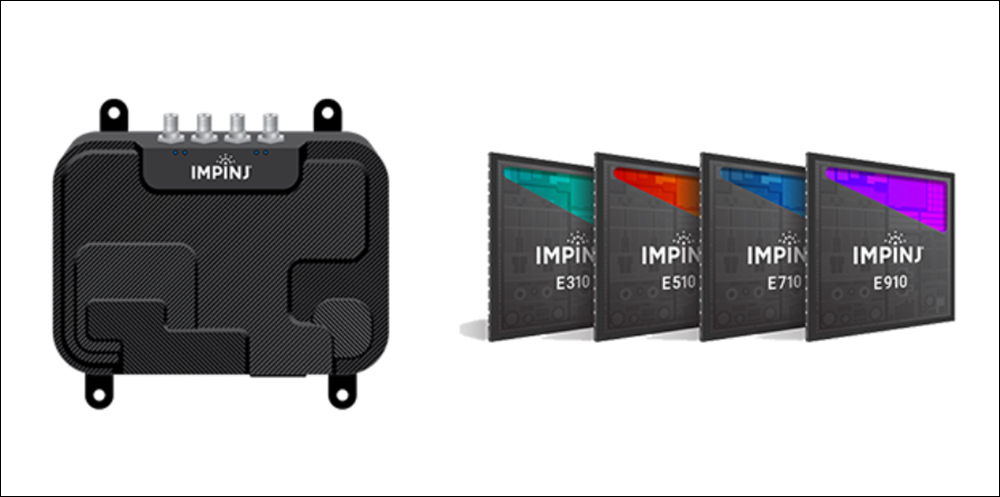- Solving the Age-Old Problem of Counterfeits
- How the Authentication Function Works
- Fast Item Tag Capture, Even in High Volumes
- Bringing UHF RFID to New Users for Brand Authentication
Impinj, a Seattle-based RFID technology company, has released a solution engine that brings authentication application to ultrahigh-frequency (UHF) RFID technology, sometimes branded as RAIN. The system, known as the Impinj Authenticity solution engine, consists of the company’s new M775 RFID tag chips with built-in cryptographic computation capability, as well as cloud-based authentication services to verify each tag is genuine as it is read. It also includes Impinj-based readers and partner products.
The solution engine is intended to provide users with a tool to identify and thus prevent counterfeit merchandise, including apparel, automotive parts and medications. The M775 RFID tag chips come with a unique cryptographic key that can be verified by Impinj’s authentication service to identify the tag is genuine.
The solution engine works with Impinj’s R700 RFID readers, or with readers using the company’s E family or Indy chips, and it can scan hundreds of connected items simultaneously, according to Jeff Dossett, the company’s chief revenue officer. One Impinj partner now building the solution engine into its atma.io solutions is Avery Dennison Smartrac. The authentication solution, Dossett says, results from a need that Impinj’s solution-provider partners have identified, related to helping their retailer and brand customers fight counterfeiting.
Solving the Age-Old Problem of Counterfeits
“Brand owners often talk about counterfeit products as a key loss of value in their businesses,” Dossett explains. For that reason, Impinj has been developing a system that would address this challenge, as a potential add-on to the inventory-management features that RFID provides. “For some time, we’ve been contemplating what contribution we could make to help brands and retailers address the product-authentication challenge.”

Jeff Dossett
The solution is two-pronged: providing added functionality to existing RFID deployments where inventory management is in use, as well as serving new customers that may not employ RFID and simply need an authentication solution. The solution engine will be used by Impinj’s partners to build a variety of brand-protection and product-authentication solutions. The counterfeiting problem is as old as the retail industry, the company explains. The presence of fake merchandise in the retail market erodes brand trust, results in waste throughout the economy and, in some cases, can cause harm—for instance, the use of counterfeit drugs, dog food or baby formula.
RFID tags are predominantly used in the retail market for inventory management. Unique ID numbers on tags, interrogated by RFID readers, provide automated inventory visibility to let businesses understand supply chain availability, optimize the placement of goods close to demand and ensure out-of-stock events do not occur. A standard UHF RFID tag can still be cloned or duplicated.
Bad actors could generate a replicated RFID tag with the same ID as the original legitimate tag, and they could place it on a fake product to prevent it from being identified in the supply chain or at stores before it is sold. Those using the Authenticity solution engine leverage the M775 tag chip, which comes with a unique cryptographic key that can only be verified by the authentication platform.
How the Authentication Function Works
At any point along the supply chain, users can read a tag via a handheld or fixed reader and issue the Gen2v2 “Authenticate” command. The command presents a random challenge to the tag chip, which then computes a response using its secret key and returns it to the reader. The device then sends the tagged item’s data to the solution provider’s product databased in the cloud, which checks the item data and communicates with the authentication service to confirm the tag chip’s authenticity. The entire process takes place within milliseconds, Dossett says.
If the chip fails the authenticity check, an alert is sent back to the product database. The software could then display a flag in the application or software, or it could alert the user through other notifications that a product needs to be removed from the supply chain or shelf. The authentication data can also provide additional business data if the tag is read during the supply chain. By identifying at which point the counterfeit product and tag were captured, the system enables users to go upstream in the supply chain and identify where a fake product was introduced.
The entire interrogation and authentication process can take longer than simply reading a tag’s ID number, because it requires interaction with a server in the cloud. However, Dossett says, it can still be accomplished at high speed. “This system is designed to be highly efficient,” he states, adding that some factors, such as network latency in a particular environment, would vary for specific applications and locations. “However, we’re leveraging core Impinj RAIN capabilities, with a speed to read [tags] potentially up to 1,000 tagged items per second.”
Fast Item Tag Capture, Even in High Volumes

The solution engine works with Impinj’s R700 RFID readers, or with readers using the company’s E family or Indy chips.
Because of that relative speed, Dossett says, the M775-based tag retains the operational efficiency of standard RFID tag reads used for inventory counts. “It’s a very slight change in the milliseconds,” he states, “almost imperceptible.” In some cases, the technology is expected to give brands and customers their first reason to consider and deploy RFID, if their key challenge was brand protection. For other use cases, he adds, it will extend the value of existing RFID deployments.
There are other non-UHF RFID brand-authentication technologies available in the market, which are often used by high-value brand owners, such as those making designer accessories like leather handbags or liquors. While UHF RFID technology has traditionally been focused on providing visibility and inventory management, brand authentication on high-value items in smaller volume has been enabled by such technologies as Near Field Communication (NFC), QR codes and Bluetooth.
With the incorporation of authentication within UHF RFID tag reads, the solution is aimed at relatively fast item tag capture, the company reports, even in high volumes. Authentication based on QR codes or NFC, on the other hand, which could be accomplished with a smartphone, cannot be done at these high rates. While phone-based authentication technologies provide benefits for specific applications, Dossett says, “We think this [counterfeit] problem is massive, but [existing] solutions are focused on a very small subset of products and items in the marketplace.”
Bringing UHF RFID to New Users for Brand Authentication
Apparel will be one category the solution targets. Others could include pharmaceuticals, automotive parts, tools or construction materials and equipment—think steel, cement, bolts or electric cables, the company indicates.
The M775 is the latest member of Impinj’s M700 series of ICs, and the first of the company’s products to incorporate a cryptographic engine. The chip is somewhat more expensive than a standard Impinj UHF RFID chip offering only a unique ID, Dossett notes, adding, “It has a price point that reflects that we built some additional logic in that chip.” He calls the added digital logic a “modest impact” on pricing, which would be offset by the value the added functionality offers.
Avery Dennison Smartrac is among the Impinj partners that have existing cloud-based solutions leveraging RFID data, which now will incorporate authentication functionality. For solution providers, Dossett says, “Our solution engine creates an opportunity to quickly and easily integrate a new performance capability.”
Key Takeaways:
- The Impinj Authenticity solution provides an authentication service by decoding an encryption key encoded on each UHF RFID tag.
- The solution provides both authentication and inventory management, and the company expects it to appeal to end users that may be new to the technology.


